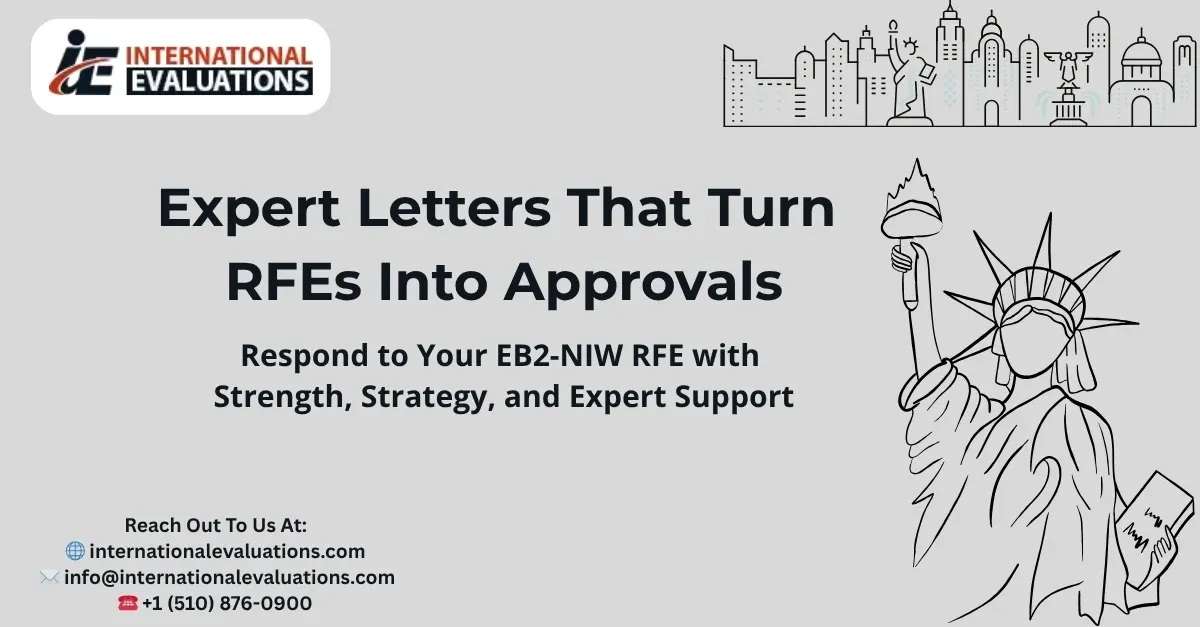Introduction
In today's globalized globe, college qualifications are increasingly valued throughout national borders. Lots of individuals seek to advance their occupations or seek instructional possibilities in different countries, requiring a detailed understanding of their scholastic credentials. This is where international credential examination services entered play, assisting both people and establishments in verifying the authenticity and equivalency of international academic credentials.
Among the various methods of credential assessment, the course-by-course credential evaluation stands apart as a precise strategy that offers an in-depth analysis of an individual's academic transcripts. This write-up will discover the subtleties of course-by-course assessments, outlining what they entail, why they are very important, and how they can impact one's career trajectory.
What is Course‑by‑Course Credential Evaluation?
Definition and Purpose
A course-by-course credential evaluation includes an in-depth evaluation of each course provided on a scholastic records. This evaluation not just converts grades and credits yet likewise analyzes the web content and roughness of each program taken by the student. The primary goal is to establish just how these programs straighten with instructional requirements in an additional country.
Importance of Course‑by‑Course Evaluations
Why is it necessary to conduct a course-by-course analysis? For individuals preparing to research or function abroad, this sort of assessment can provide useful understandings into how their previous academic experiences equate in a brand-new context. It assists establishments in making notified choices regarding admissions, hiring, or licensure.
The Process of Course‑by‑Course Credential Evaluation
Step 1: File Collection
The primary step in any type of academic credential evaluation process is accumulating essential records. This usually includes:
- Official transcripts Degree certificates Course syllabi (if available)
Having these documents all set enhances the assessment process.
Step 2: Review and Analysis
Once papers are collected, critics thoroughly evaluate them for credibility and completeness. Each program is evaluated based on a number of standards:
- Credit Hours: The number of credit scores were appointed to each course? Grades: What qualities were achieved? Course Content: What subjects were covered?
Step 3: Contrast with Regional Standards
After extensive evaluation, critics compare the courses against neighborhood educational requirements. They may reference resources such as:
- National databases Accreditation bodies Institutional guidelines
This contrast assists establish equivalency levels for every course.

Step 4: Record Generation
Finally, critics compile their findings right into an extensive report that lays out:
Total credit scores earned. Equivalent training courses at neighborhood institutions. Grading scales comparisons.This report serves as an official document that can be offered to colleges or employers.
Benefits of Course‑by‑Course Credential Evaluations
Enhanced Comprehending of Academic Background
One primary benefit is that trainees gain quality on how their international education and learning aligns with regional expectations. This understanding equips them for much better decision-making worrying further studies or task applications.
Increased Employability
Many companies need candidates to have actually examined credentials when thinking about candidates from abroad. A positive examination can dramatically improve employability prospects.
Facilitates Admission to Educational Programs
For students wishing to enlist in degree programs, having a comprehensive analysis helps organizations analyze whether candidates fulfill access needs much more effectively.
Work Experience Analysis vs. Course-by-Course Credential Evaluation
What is Work Experience Evaluation?
A work experience evaluation concentrates on analyzing specialist experiences as opposed to academic success. It analyzes abilities acquired via employment rather than formal education.
Key Differences In between Evaluations
|Function|Course-by-Course Credential Assessment|Job Experience Analysis|| ---------------------------|---------------------------------------|----------------------------|| Emphasis|Academic courses|Professional experience|| Paperwork Required|Transcripts and syllabi|Employment letters|| Outcome|Academic similarity|Skill acknowledgment|
Understanding these differences aids individuals in choosing which type of evaluation fits their needs best.
Expert Point of view Letters
Importance of Professional Point of view Letters
An expert opinion letter function as an additional layer of recognition for analyses, particularly when distinct situations occur-- like unaccredited institutions or non-traditional instructional experiences.
How They Are Used
These letters can sustain applications by supplying insights from professionals who analyze certifications based upon industry requirements or details institutional requirements.
Common Mistaken beliefs Concerning Credential Evaluations
Myth 1: All Examinations Are Created Equal
Not all analyses hold the very same weight; various companies have varying methodologies and approval prices among institutions.
Myth 2: Only Degrees Matter
While degrees are vital, several employers value skills gained through job experience just as-- and this stresses the significance of job experience evaluations along with academic assessments.

FAQs Regarding Course‑by‑Course Credential Evaluation
What documents do I require for a course-by-course credential evaluation?- You usually require main transcripts, level certificates, and possibly course syllabi if available.
- The period differs by service provider but normally ranges from a few weeks to a number of months relying on complexity.
- Yes! The majority of companies acknowledge assessed qualifications when making employing decisions.
- Generally speaking, indeed; due to its thorough nature and detailed analysis.
- Not all; it's vital to inspect particular institutional requirements before applying.
- It's finest to clear up any inconsistencies with your institution prior to submission; critics may flag incongruities influencing your assessment.
The Role of Different Stakeholders in Credential Evaluation
Educational Institutions
Institutions rely on precise evaluations to confess qualified candidates while making certain conformity with certification standards.
Employers
Employers utilize assessments to validate potential hires' qualifications accurately-- enhancing depend on throughout recruitment processes.
Government Bodies
Some government agencies require credential evaluations for immigration functions; hence playing an important function in worldwide mobility.
Conclusion
In summary, navigating the complexities surrounding global education calls for thorough understanding and competence-- both found within the world of credential evaluations especially concentrated on https://griffinonqj064.tearosediner.net/course-by-course-evaluations-a-comprehensive-approach-to-academic-credentials programs taken during one's scholastic trip. A course-by-course credential evaluation not just brightens private success however likewise promotes opportunities across boundaries through improved employability and educational access.
As globalization proceeds shaping our globe, investing time into understanding these nuances can prove very useful for those looking toward global perspectives-- whether academically or skillfully oriented! Always bear in mind that you have alternatives offered-- so make educated decisions concerning your future!